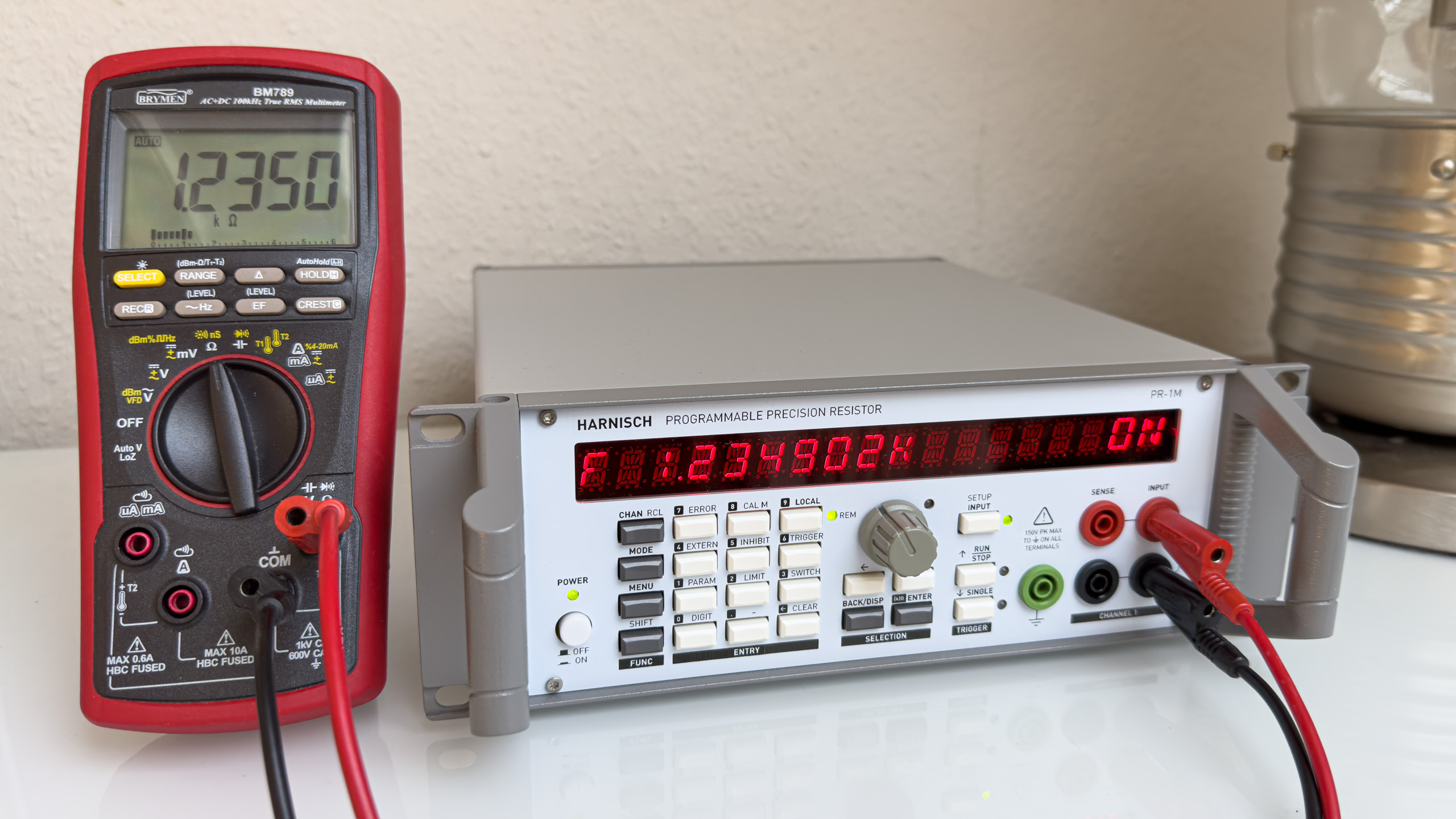Generally, test and measurement equipment needs a certain period of warm-up time to provide low drift. That is also true for the programmable decade. I’m especially interested in the warm-up time with all relays off as well as with many relays on. I chose a value of \(100\text{ k}\Omega\) for the second test. (For simplicity I decided against using latching relays, however that would be a better choice performance-wise as mentioned before. Due to the additional power dissipation in the relay coils the curves will look different.)
The programmable resistor decade mainboard has two temperature sensors that can be read remotely via SCPI. To have a more complete picture I’ll also use the SCPI thermometer from a previous post (https://sebastianharnisch.de/scpi-enabled-thermometer/) to sample the ambient temperature. So let’s collect some datapoints and plot a few curves.

Unfortunately, I had to correct a simple error in the test program so the unit was already on for a few moments, explaining parts of the gap between the internal and the ambient temperature. Also, the internal temperature sensors are not nearly as precise as the sensor used in the SCPI thermometer, so a certain deviation between both sensors is expected. The temperature rise is fairly limited and it takes about one hour to see most of the temperature rise. According to the measurement it would likely take more than two hours for the unit to reach an thermal equilibrium. That being said, the steadily rising ambient temperature limit my confidence in the measurement.
Note: The small temperature peaks likely came from the laptop fan that switched on intermittently, although sensor was about 1 m away from the laptop and not (directly) in the airflow. Also I did the measurement on a day with significant solar radiation that heated up the room significantly.
I tried to optimize the measurement protocol for the second more interestingly scenario with \(100\text{ k}\Omega\) at the input (only partially successful, I guess). Here it is:

As expected the power dissipation of the relays increases the internal temperature significantly. Compared to the previous scenario, the final temperature increase has roughly trippled, and is now at about 8°C. After about 30 min, the internal temperature is already at about 80% of the final temperature and after one hour effectively at the final temperature. Here, with the ambient temperature falling, we might observe the opposite effect: The heat-up time might be slightly reduced when compared with a scenario where the ambient temperature is constant.
Anyway, my conclusion is: Wait at least 1 hour with the input enabled and at something like \(100\text{ k}\Omega\) before going through the calibration procedure.
